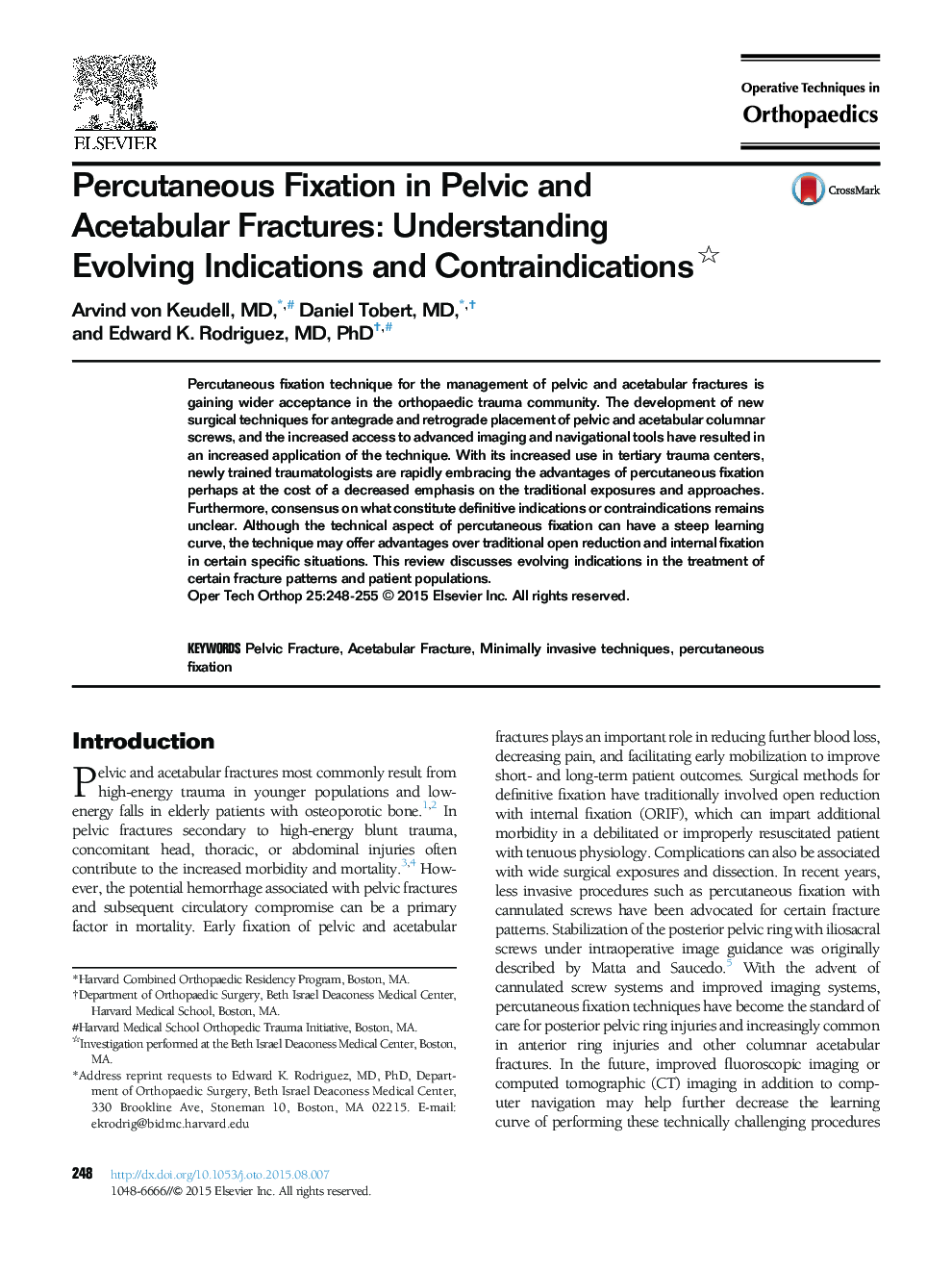| Article ID | Journal | Published Year | Pages | File Type |
|---|---|---|---|---|
| 4078850 | Operative Techniques in Orthopaedics | 2015 | 8 Pages |
Percutaneous fixation technique for the management of pelvic and acetabular fractures is gaining wider acceptance in the orthopaedic trauma community. The development of new surgical techniques for antegrade and retrograde placement of pelvic and acetabular columnar screws, and the increased access to advanced imaging and navigational tools have resulted in an increased application of the technique. With its increased use in tertiary trauma centers, newly trained traumatologists are rapidly embracing the advantages of percutaneous fixation perhaps at the cost of a decreased emphasis on the traditional exposures and approaches. Furthermore, consensus on what constitute definitive indications or contraindications remains unclear. Although the technical aspect of percutaneous fixation can have a steep learning curve, the technique may offer advantages over traditional open reduction and internal fixation in certain specific situations. This review discusses evolving indications in the treatment of certain fracture patterns and patient populations.
